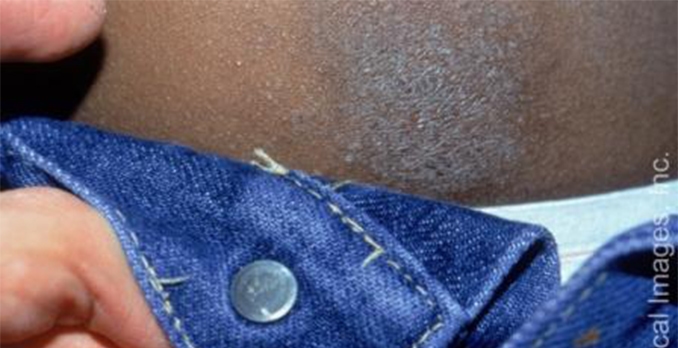
The correct diagnosis is allergic contact dermatitis. Allergic contact dermatitis (CD) is a type IV delayed hypersensitivity reaction of sensitized individuals to an allergen—in this case, nickel. Symptoms include intense pruritus, a burning sensation, and edema and redness of involved skin.
Common allergen-containing products include cosmetics, soaps, dyes, and jewelry. The most frequent sensitizers are fragrance, nickel, neomycin, formaldehyde, lanolin, and a host of other common environmental chemicals. The oil from poison ivy plants and numerous other plants are frequent causes, as well.
Allergy to nickel found in the button of jeans is a common cause of allergic CD in children. Nickel is also found in jewelry, eyeglass frames, and wristwatch strap clasps. Subsequent to the primary exposure, any re-exposure will usually cause a reaction within 24 to 48 hours. Severe exposures in a highly sensitized patient can cause a reaction in as few as six hours, but this is uncommon. An individual can become highly sensitized after multiple exposures to the same agent. CD usually resolves in two weeks with the use of topical corticosteroids.
Case presented by Logical Images, Inc.
[taq_review]
